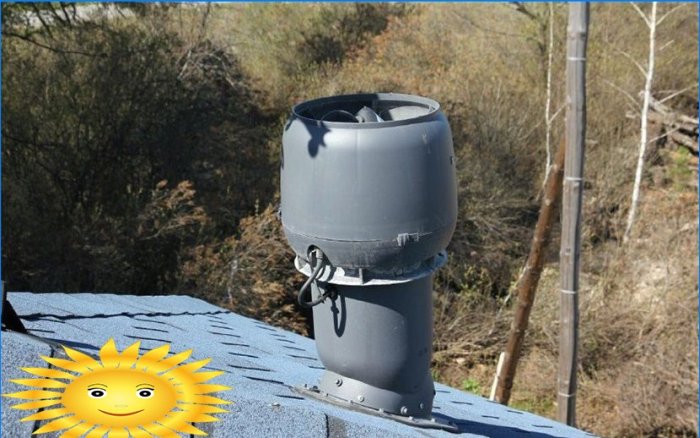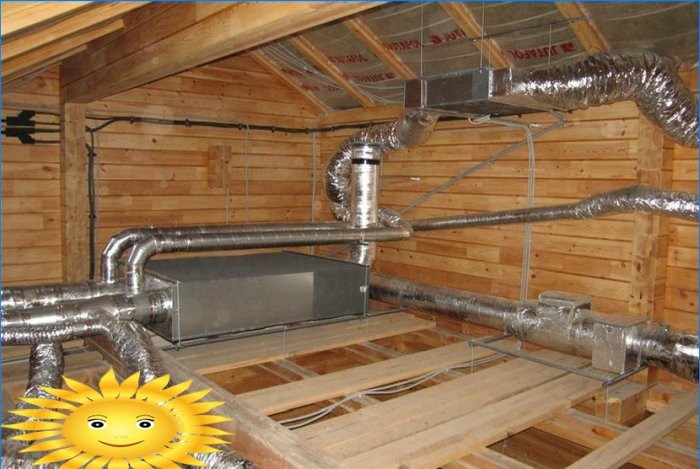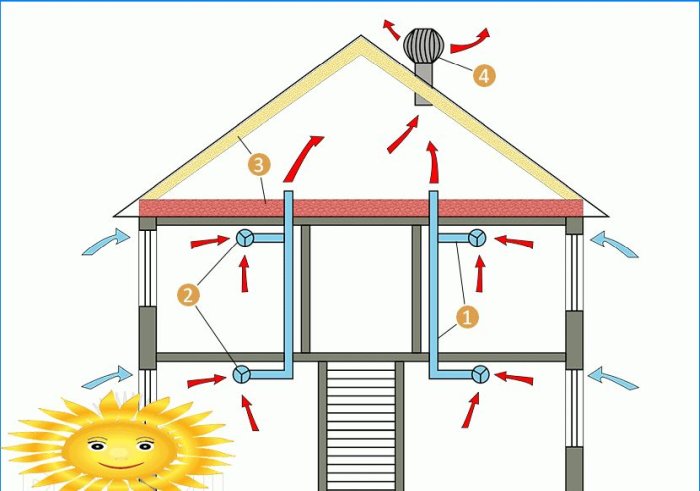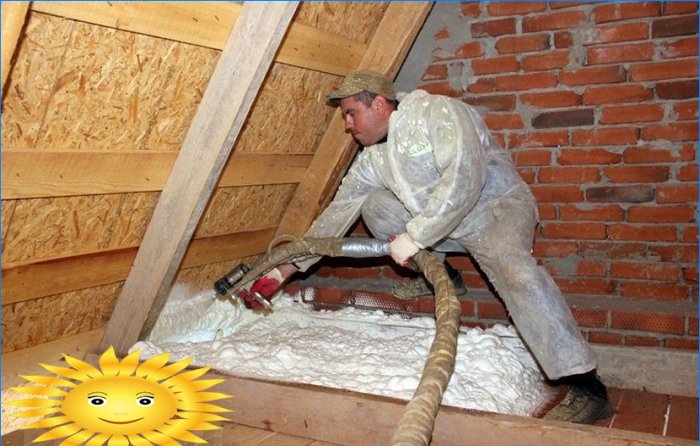
Poor ventilation, in turn, leads to insufficient removal of moisture and dust from the room, which is fraught with the formation of fungus, an increased risk of infectious diseases, drowsiness, uncomfortable temperature conditions, etc..
There are different types of ventilation that are good for certain conditions and each has its own disadvantages and advantages. One of the ventilation systems is the organization of a warm attic. To begin with, let’s briefly consider the principle of ventilation..
The basic principle of air exchange is different densities of heated and cold air. That is why on a frosty day when the window is open, denser cold air enters the lower part, and more rarefied and lighter warm air exits the room through the upper area of the window. A pressure difference is created in different air layers, due to which cold air gradually fills the apartment.

The ventilation system takes fresh air from the lower part of the building through open vents, cracks in the enclosing structures, window valves. The exhaust air is removed through ventilation shafts that are discharged to the roof of the building. The higher the shaft, the greater the pressure difference is created in the room, and the more intensive the air exchange will take place. To improve this indicator, fans are also installed on the supply and exhaust ventilation..
In most cases, residential buildings are equipped with natural ventilation systems, since not all installed supply and exhaust fans are suitable for operation in such conditions. Such devices should have a low noise level (ideally, have electronic controls for night mode) and be located in places convenient for repair and replacement, which is not always easy to implement in practice..

Warm attic systems took root in construction projects in the 1970s. Such a system differs from separate ventilation shafts in that the exhaust air from all the ducts of the house (section of the house) is discharged into the attic space or a completely isolated part of the attic. Further, the air is discharged into the atmosphere through one ventilation shaft on the roof. In this case, the attic itself differs from the cold version in that it is insulated and airtight and, in fact, is a large collection channel for all branches of ventilation in the house..
 1 – ventilation ducts; 2 – exhaust fans; 3 – thermal insulation of the attic; 4 – exhaust shaft with a deflector
1 – ventilation ducts; 2 – exhaust fans; 3 – thermal insulation of the attic; 4 – exhaust shaft with a deflector
Ventilation with a warm attic has several advantages:
- As you know, up to 25% of the heat goes through the ceiling and roof of the building. Such a ventilation project is designed to significantly reduce heat loss by heating the attic room with exhaust air..
- Due to a sharp increase in the volume of the ventilation duct in the attic area, the aerodynamic air resistance decreases, which means a qualitative increase in recirculation.
- Reducing the number of shafts on the roof of the premises leads to a decrease in the risk of leaks and an increase in the durability of the roof due to the small number of junctions.
- The temperature in the mine rises due to the height of the warm attic space.

A warm loft ventilation design reduces the risk of ventilation toppling over and exhaust air entering the upper residential floors from the lower.
The correct arrangement of such an attic room (part of the attic) provides for good insulation and sealing of all cracks and openings, as well as the absence of all kinds of vents and windows in such a room. A plus will also be the passage of the heating main through such an attic. In this case, access to the highways through a sealed door is allowed. Protection against atmospheric precipitation is carried out by installing a protective umbrella or pallet in the ventilation shaft. The optimum temperature for ventilation will be 14-16 degrees in the attic. This ventilation option is recommended for areas with a cold climate..

Proper installation will be the key to good heat transfer, namely:
- it is advisable to lay the insulation above the loggia in order to avoid cold bridges in the attic;
- the heads of the ventilation units are completed with diffusers, which are directed towards the common exhaust shaft;
- in the roof structure itself, if possible, there should be no elements that impede the free movement of air in the attic;
- it is advisable to do ventilation with a warm attic in buildings not with a complex configuration (different levels of rooms on the same floor, a complex roof system, etc.).
A properly designed and installed ventilation system is a guarantee of health for you and your family and friends, and will also extend the life of your home.

Could you please provide some suggestions or advice on how to properly arrange a warm attic for ventilation in a house?